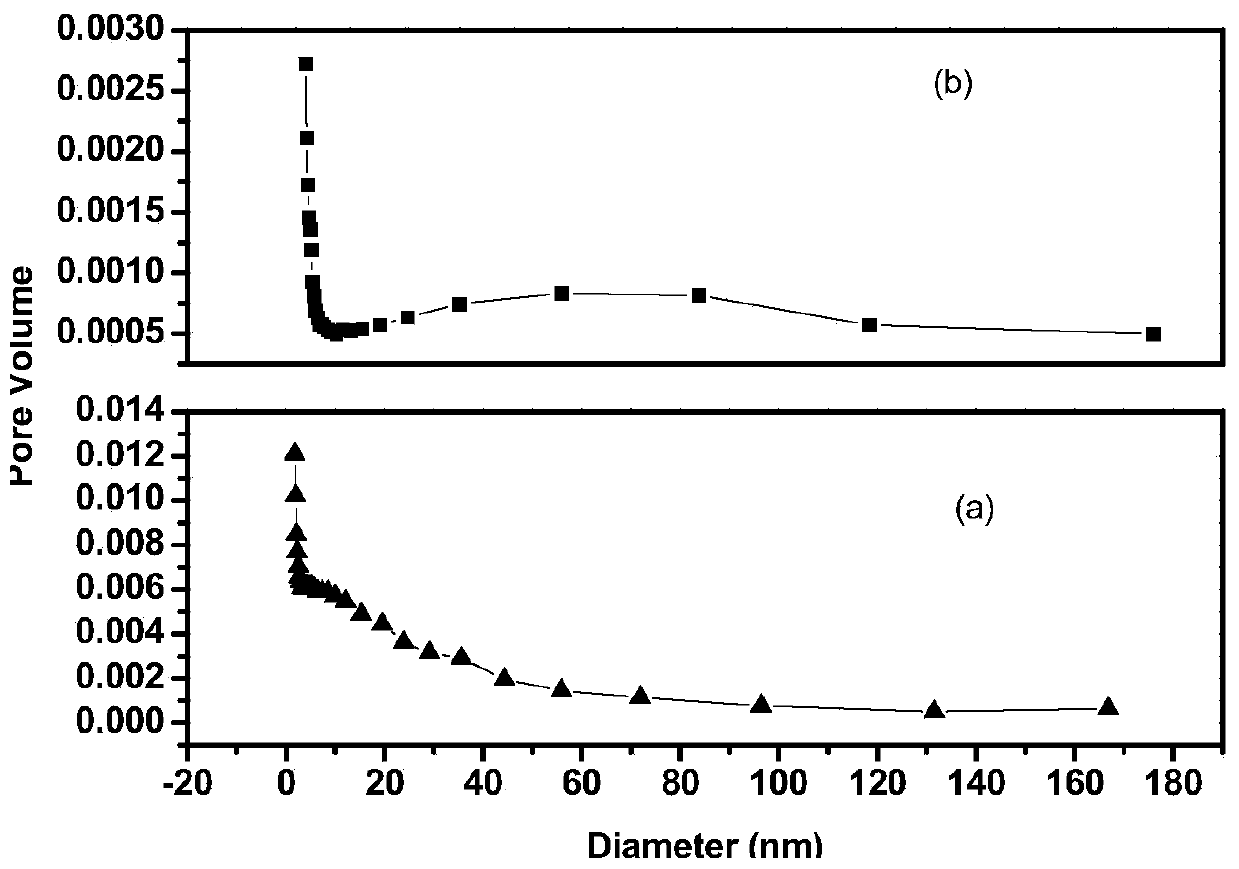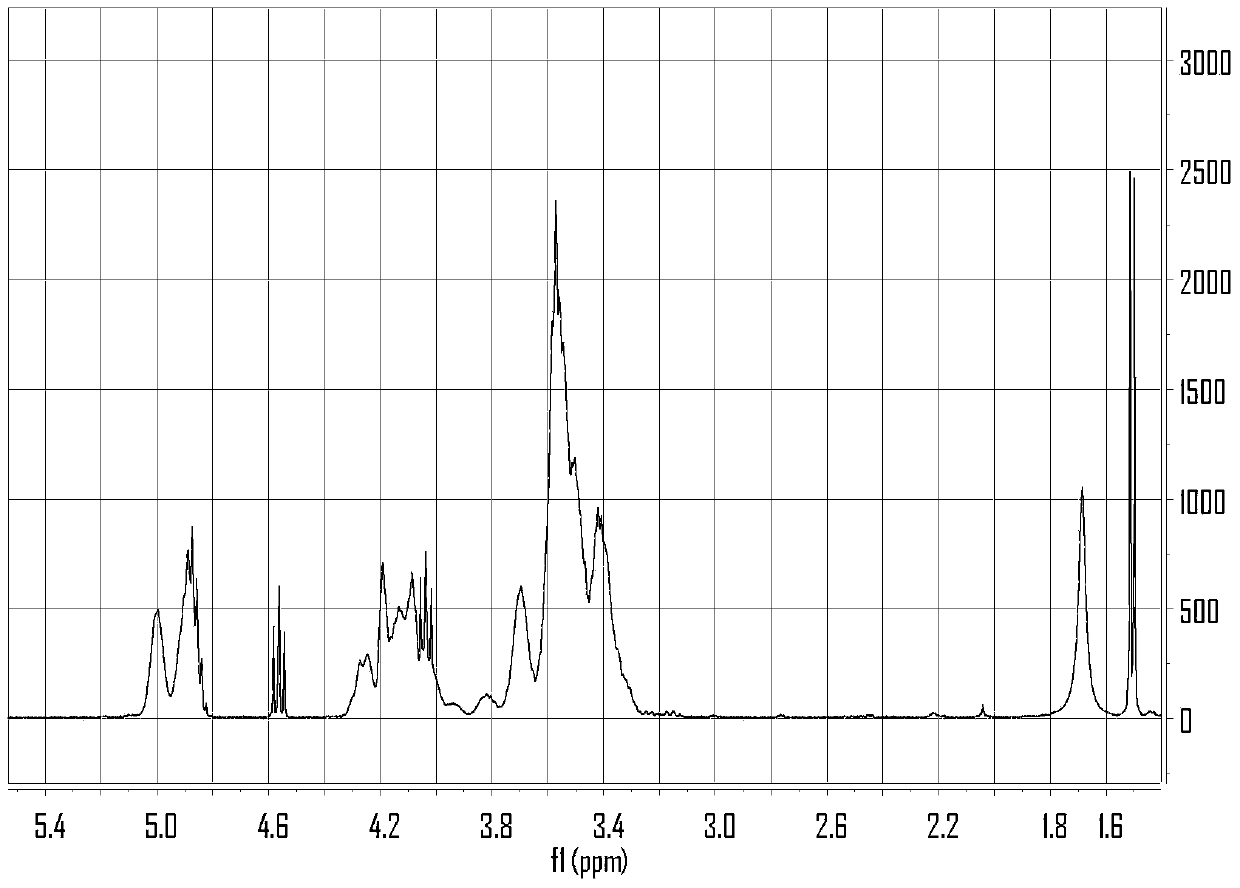Preparation method and application of bi-metal cyanide catalyst
A double metal cyanide and catalyst technology, applied in physical/chemical process catalysts, chemical instruments and methods, chemical/physical processes, etc., can solve the problems of low carbon dioxide insertion and low catalyst activity, and achieve wide pore size distribution and activity. improved effect
- Summary
- Abstract
- Description
- Claims
- Application Information
AI Technical Summary
Problems solved by technology
Method used
Image
Examples
Embodiment 1
[0060] Weigh 10g of potassium hexacyanocobaltate(III) into a 250mL three-necked flask, add 50mL of deionized water, 90mL of TritonX-100, 50mL of tert-butanol, and 60mL of cyclohexane, and stir for 2 hours at 2000r / min to obtain Uniform and transparent microemulsion. Weigh 40g ZnCl 2 In a 1L three-neck flask, add 100mL of deionized water, 180mL of TritonX-100, 100mL of tert-butanol and 120mL of cyclohexane, and stir at 2000r / min for 2h to obtain a uniform microemulsion. Transfer the potassium hexacyanocobaltate(III) microemulsion to a 300mL separatory funnel, and add it dropwise to the ZnCl 2 In the microemulsion, the temperature was controlled at 30°C. After the dropwise addition was completed, stirring was continued for 2 h. By measurement, the average particle diameter of the emulsion after mixing is 15nm. The resulting solution was demulsified and centrifuged under the condition of 9000r / min, the precipitate was put into a 1L three-necked flask, a mixed solution of 200m...
Embodiment 2
[0062] Weigh 10g of potassium hexacyanoferrate(Ⅲ) into a 250mL three-neck flask, add 50mL of deionized water, 90mL of tetrabutylphosphine bromide, 50mL of ethylene glycol monomethyl ether, and 60mL of dimethyl ether, Stir for 2 hours under the same conditions to obtain a uniform and transparent microemulsion. Weigh 40g of zinc sulfate into a 1L three-neck flask, add 100mL of deionized water, 180mL of tetrabutylphosphine bromide, 100mL of dimethyl ether and 120mL of ethylene glycol monomethyl ether, and stir for 2 hours under the condition of 2000r / min to obtain a uniform Microemulsion. Transfer the potassium hexacyanoferrate (III) microemulsion to a 300mL separatory funnel, and add it dropwise into the zinc sulfate microemulsion under the stirring condition of 2000r / min, and the temperature is controlled at 30°C. After the dropwise addition was completed, stirring was continued for 2 h. By measurement, the average particle diameter of the emulsion after mixing is 16nm. The ...
Embodiment 3
[0064] Weigh 10g of potassium hexacyanocobaltate (Ⅲ) into a 250mL three-neck flask, add 50mL of deionized water, 90mL of lecithin, 50mL of dimethyl ether, and 60mL of petroleum ether, and stir for 2 hours at 2000r / min to obtain a uniform Microemulsion. Weigh 40g ZnBr 2 In a 1L three-neck flask, add 100mL of deionized water, 180mL of lecithin, 100mL of dimethyl ether and 120mL of petroleum ether, and stir at 2000r / min for 2h to obtain a uniform microemulsion. Transfer the potassium hexacyanocobaltate (Ⅲ) microemulsion to a 300mL separatory funnel, and add it dropwise to the ZnBr under the stirring condition of 2000r / min. 2In the microemulsion, the temperature was controlled at 30°C. After the dropwise addition was completed, stirring was continued for 2 h. By measurement, the average particle diameter of the emulsion is 16nm. The resulting solution was demulsified and centrifuged under the condition of 9000r / min, the precipitate was put into a 1L three-necked flask, a mixed...
PUM
| Property | Measurement | Unit |
|---|---|---|
| specific surface area | aaaaa | aaaaa |
| particle size | aaaaa | aaaaa |
| particle size | aaaaa | aaaaa |
Abstract
Description
Claims
Application Information
 Login to View More
Login to View More - R&D
- Intellectual Property
- Life Sciences
- Materials
- Tech Scout
- Unparalleled Data Quality
- Higher Quality Content
- 60% Fewer Hallucinations
Browse by: Latest US Patents, China's latest patents, Technical Efficacy Thesaurus, Application Domain, Technology Topic, Popular Technical Reports.
© 2025 PatSnap. All rights reserved.Legal|Privacy policy|Modern Slavery Act Transparency Statement|Sitemap|About US| Contact US: help@patsnap.com



